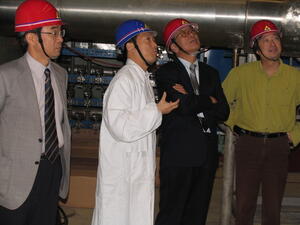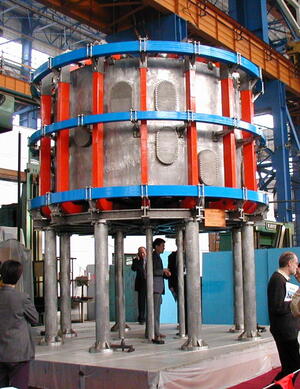The man who built tokamaks
There have been many tokamaks in the course of Songtao Wu's life: some which were never made, some his team designed almost from start to finish; some he built for others, and the ITER Project, of course, which he joined exactly a year ago.
Songtao, 47, was born in Hefei, a city of three million inhabitants located some 600 miles west of Shanghai. The city's importance in Chinese scientific research is second only to Beijing. It is home to four national institutes, the Institute of Plasma Physics of the Chinese Academy of Science (CAS) among them.
"My mother worked for 20 years as a chemist at the Optical Fine Mechanical Institute of CAS and, as a child, all the adults around me were scientists. I was like a sponge when it came to science, I'd absorb everything. I was determined to study science, but until entering university in 1979, I didn't know precisely what major I would choose." Family tradition led him to optics and listening to Academician Huo Yuping's conferences steered him to fusion. "At that time, China had a big National Project, the "8th Project," to design and build a large tokamak. But unfortunately, the device was never built."
Another, less ambitious project, HTCD, was to meet the same fate in the following years. "China," says Songtao "was not as rich then as it is now..."
The opportunity to work on a large tokamak came in 1990 with the "transfer" to China of the Soviet T-7, the first superconducting tokamak with toroidal field coils, which had been in operation at the Kurchatov Institute from 1979 to 1985. In Hefei, T-7 was to be "completely rebuilt" with a new vacuum vessel and additional ports added.
China's ambition for a truly national tokamak wasn't completely fulfilled by the revamping of the old T-7, by then renamed HT-7 ("H" for Hefei). "In 1995, we started studying a new proposition, still based on T-7 and called HT-7 U, for upgrade. But we ended up building something completely new."
Songtao, by then, was in charge of the Tokamak Division of Hefei's Fusion Lab. "With a design team of 27, we managed to complete the EAST tokamak design, finish the construction and assembly by 2005, and get the first plasma in 2006. During that busy time, we could even afford to divert seven people to design and build HELIMAK for the Fusion Research Center at the University of Texas. All of this in two and a half years and within budget."
By 2006, EAST had produced its first plasma and joining ITER was the next logical step for Songtao—another device in a life devoted to building tokamaks.




